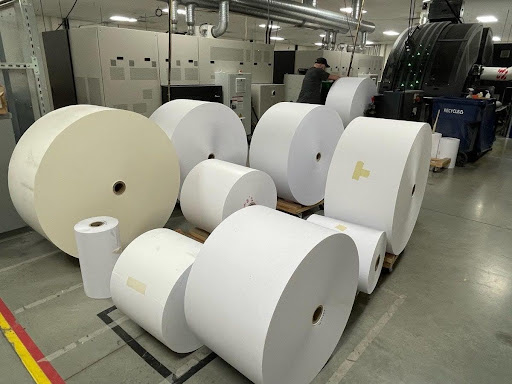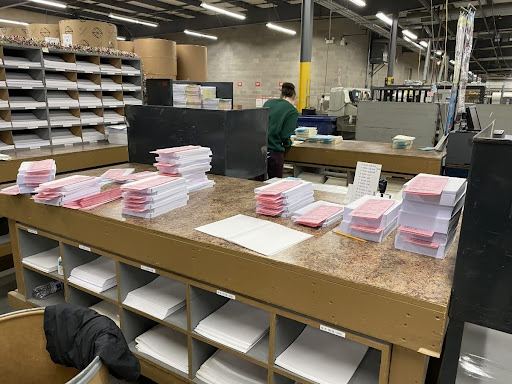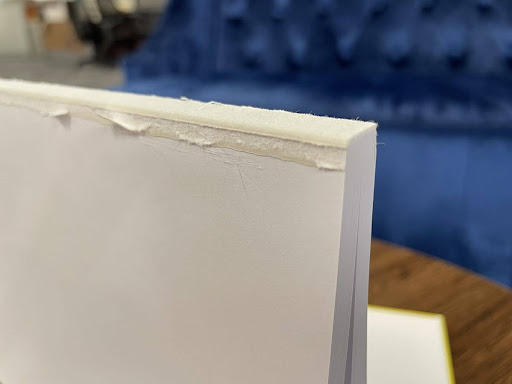How Print-on-Demand Books Are Made
I was at a social gathering earlier this year, doing my best to be innocuous and snack on appetizers. As I pondered what kind of cheese I was nibbling on, I overheard someone say, “I wonder how they get the cover to look like that.”
He was looking at our mutual friend’s bookshelf, noting a cover with embossed lettering and graphics. This was my moment to shine because I knew how they got the cover to look like that.
This led to a rather lengthy conversation about how books are printed and bound. I discovered that people, even potential authors, often don’t know what goes into making a pile of words and images into a printed book. So, let me unravel the mystery.
It starts with a PDFThat’s right, a good old PDF. A portable document format, which we all know as a PDF, is the simplest file type for printing. It has, and likely will remain, the standard.
So to print a book, that’s where you start. Digital, on-demand printers like Lulu, owner of Tilt Publishing, use a single PDF for the book’s interior and another PDF for the cover.
Book-ish lingoYou’ll need to know a few terms for the rest of this article to make sense.
- Book block: Interior printed pages of a book
- Binding type: Method by which a book is held together. The most important binding type to know is perfect bound paperback, which is the binding for a common paperback.
- Trim size or trim: Final size of a printed book
- Spine: Center of the cover where the pages are bound together
- End sheet: Blank pages to connect the book block and cover
Book printing doesn’t look like your at-home printers. No messing with ink cartridges or inconsistent color. No paper jams.
Print-on-demand publishing uses massive digital printers and enormous rolls of paper to quickly and accurately print book pages. Here’s a look at some of the paper rolls from a Lulu print facility:

Each roll (along with enormous drums of ink) gets loaded into one of several printing presses that can rapid-fire print every single page of the PDF.
Once they’re printed, the pages are rolled back up and moved to a machine to cut and collate the pages into a book block.
 Binding your book
Binding your book
Paperback books from print-on-demand printers generally glue a thin strip of material along the spine of the book block. The glue is cured (which takes time), creating a strong adhesive along the edge of the pages.
The binding machine applies the protective material and the glue and cures them together to create the binding. If necessary, the book is cut down to its trim size.
Once the book block has been cured and trimmed, it’s ready for the cover.
 Printing the book cover
Printing the book cover
There are two common types of book covers: paperback and casewrap covers.
Paperback coversThe complete cover — the front, the spine, and the back — is printed on heavier paper stock. Then it is coated with a glossy or matte finish. The finished cover is bound to the book block using more glue and curing.
Casewrap coversCreating and attaching a casewrap cover to a book block is a multi-step process.
First, the cover is assembled from three cover boards — one each for the front, spine, and back. The printed cover art uses a similar paper as the paperback book, except the cover art is wrapped over the boards.
Then the cover board and art are attached to the book block using end sheets (and you guessed it, glue), allowing the cover to shift around without putting unnecessary strain on the spine.
Packaging and shippingPrint-on-demand publishing can use this process to create single copies of a book quickly and at the same quality as an offset printer.
Once that book is printed, the printer packages and ships the books, allowing creators to fully automate their book sales. By connecting their website with an e-commerce tool like Shopify and a printer like Lulu, readers can buy your book from your site and get a copy in the mail without you having to do anything at all.
The post How Print-on-Demand Books Are Made appeared first on The Tilt Publishing.
